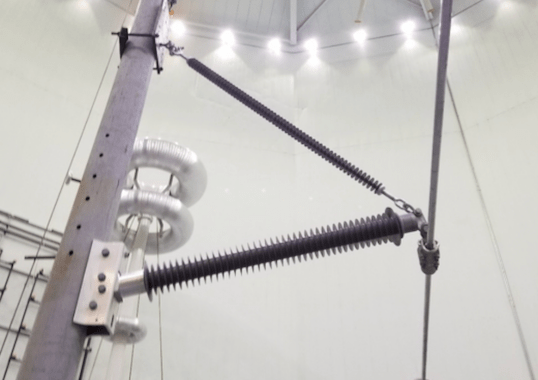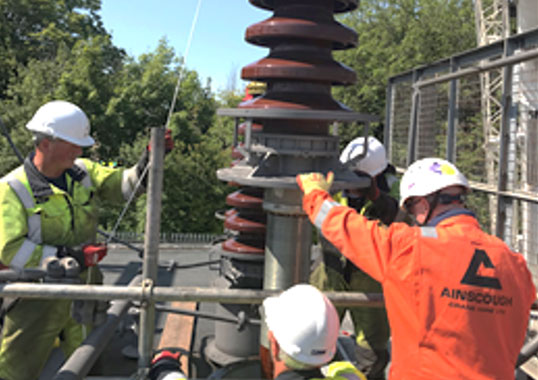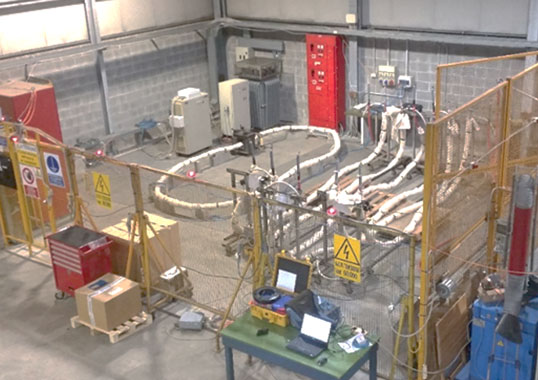Braced Line Post Test Considerations by John Schonewolf
Braced line posts (BLP) have become widely accepted to create compact high and extra-high voltage transmission lines. This design includes a combination of two distinctly different types of insulators – a horizontal line post and a suspension insulator – in a triangular configuration with the supporting structure acting as vertical member. There are no standardized test protocols for braced line post assemblies and it is therefore usually left to the manufacturer to determine the most appropriate means of testing. From a mechanical standpoint, there is no firm definition for onset of elastic buckling of the line post member and testing for this is time-consuming. As such, one area for exploration is using Finite Element Analysis (FEA) to design the BLP assembly. A similar issue involves electrical testing of BLPs. While test standards exist for the suspension and line post insulator as individual units, no standard exists for the combined assembly. Should electrical testing be performed on the overall assembly? Since electrical flashover tests represent averages, if the suspension and post had equal flashover values, would the value of the assembly be lower than that of the individual units? Or, should the individual units be sized to assure sufficiently different flashover values to eliminate statistical flashover reduction? This presentation details comparisons of actual mechanical test data for a BLP design with analytical results obtained through FEA. It also explores the effect on electrical values for line post and suspension insulators within the BLP assembly with unequal and approximately equal strike distances.









